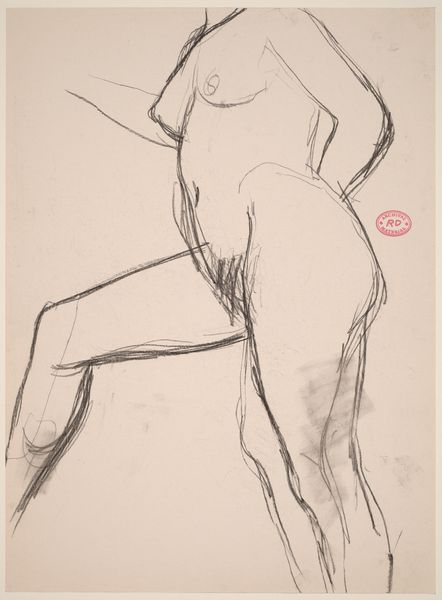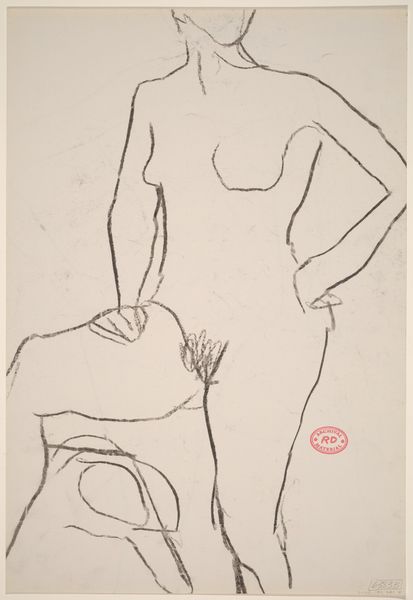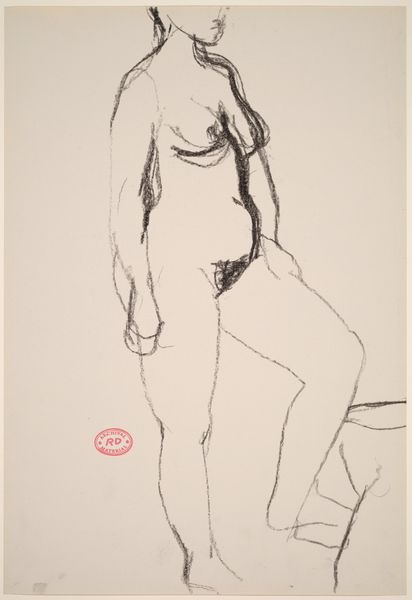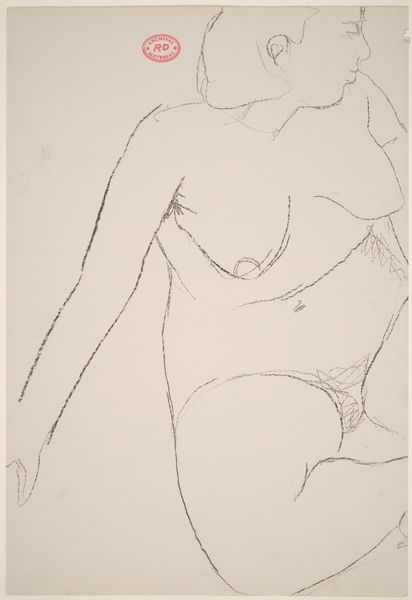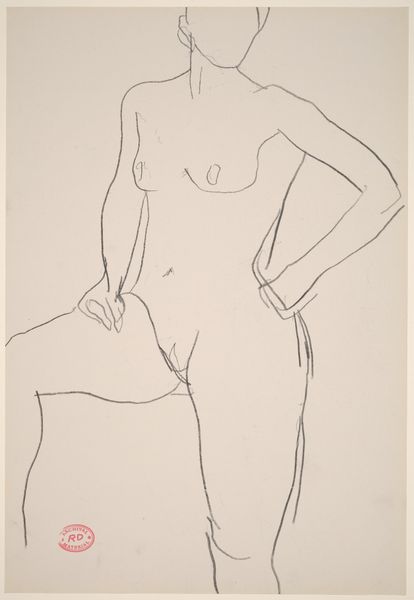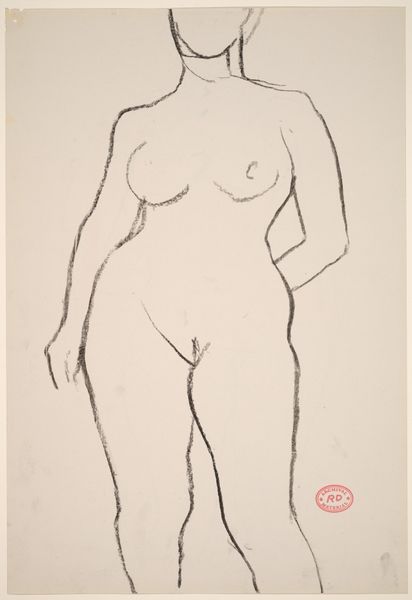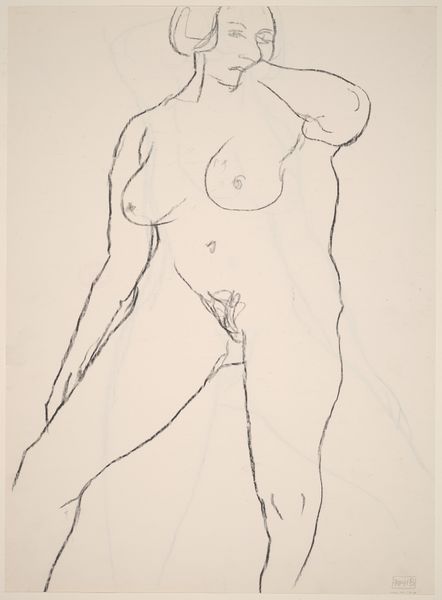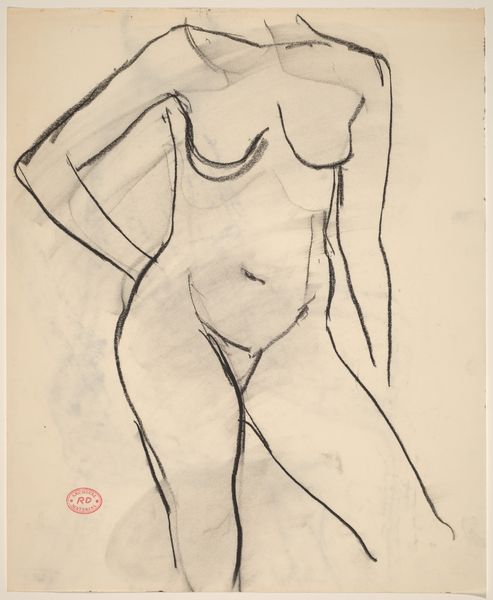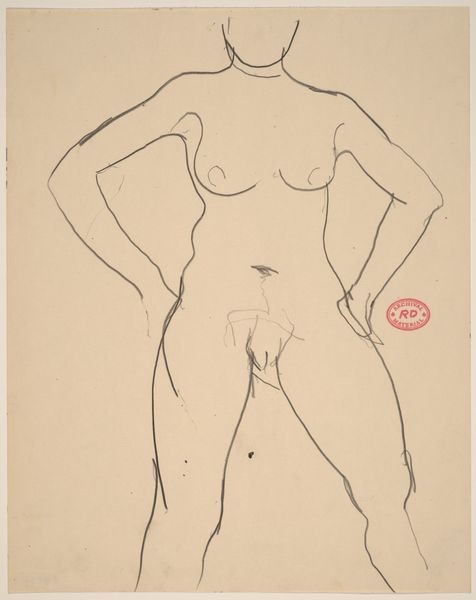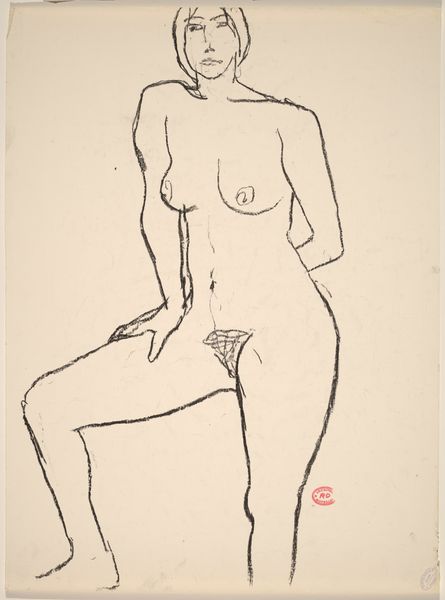![Untitled [frontal view of female nude from breasts to ankles] [verso] by Richard Diebenkorn](/_next/image?url=https%3A%2F%2Fd2w8kbdekdi1gv.cloudfront.net%2FeyJidWNrZXQiOiAiYXJ0ZXJhLWltYWdlcy1idWNrZXQiLCAia2V5IjogImFydHdvcmtzL2U1OGQyNzA3LTNkYjItNGEyZC05MTBhLTM4OTU5NDU4N2U1ZS9lNThkMjcwNy0zZGIyLTRhMmQtOTEwYS0zODk1OTQ1ODdlNWVfZnVsbC5qcGciLCAiZWRpdHMiOiB7InJlc2l6ZSI6IHsid2lkdGgiOiAxOTIwLCAiaGVpZ2h0IjogMTkyMCwgImZpdCI6ICJpbnNpZGUifX19&w=3840&q=75)
Untitled [frontal view of female nude from breasts to ankles] [verso] 1955 - 1967
0:00
0:00
drawing, pencil, graphite
#
drawing
#
figuration
#
bay-area-figurative-movement
#
pencil drawing
#
pencil
#
graphite
#
nude
Dimensions: sheet: 43.2 x 31.8 cm (17 x 12 1/2 in.)
Copyright: National Gallery of Art: CC0 1.0
Curator: Good morning, let's turn our attention to an interesting work by Richard Diebenkorn. This untitled drawing, rendered in graphite between 1955 and 1967, offers a frontal view of a female nude, specifically from the breasts down to the ankles. Editor: The economy of line is striking; the way the form is suggested rather than defined, lends it an unfinished quality that I find compelling. It evokes a sense of fleeting presence, like a memory. Curator: Precisely! The graphic simplicity almost flirts with abstraction. Notice how the heavier lines delineate the contours, creating spatial depth. There's an engagement with surface here, it's not merely representational. Editor: Absolutely, but beyond formal elements, one might consider Diebenkorn’s drawing within the wider cultural conversation surrounding the representation of the female form. It avoids both idealization and explicit objectification, reflecting a postwar societal shift towards realism, but simultaneously revealing a voyeuristic gaze, through its depiction of a partial view of a woman’s body. Curator: That historical positioning does enrich the viewing. But isn't there something powerful, too, in stripping the subject down to its core elements? He creates something more universal in its form by abstracting particular detail, don't you think? The drawing transcends an individual portrait. Editor: It is precisely this ambiguity which captures interest, wouldn’t you agree? On one hand it could be viewed as a mere art study and on the other a sociopolitical statement on objectification of the human form. The drawing encapsulates Diebenkorn's engagement with tradition, with a fresh gaze. Curator: An interesting paradox, certainly! Seeing it from a semiotic point of view gives depth to this artwork. Editor: Exactly, viewing art, particularly pieces such as this one by Richard Diebenkorn allows us to open dialogue on the position of women in society as well as see the inherent artistic form. Curator: Thank you. I appreciate your insight. Hopefully, the discussion has illuminated some dimensions of this piece that weren't immediately visible.
Comments
No comments
Be the first to comment and join the conversation on the ultimate creative platform.
